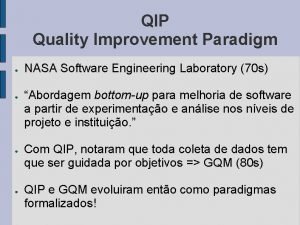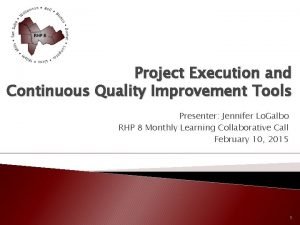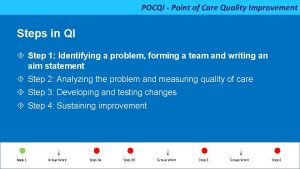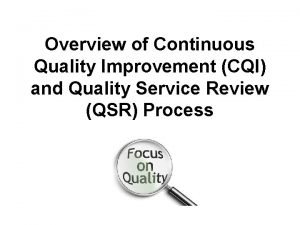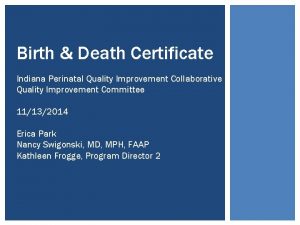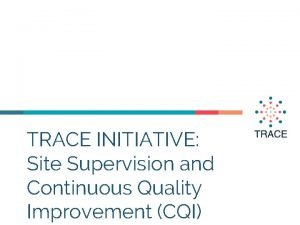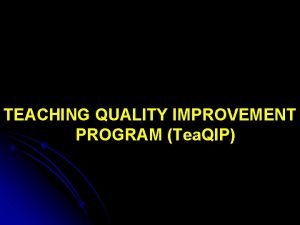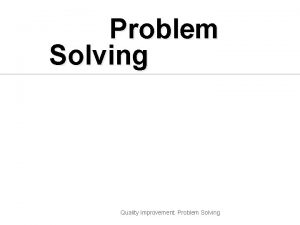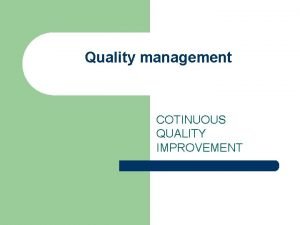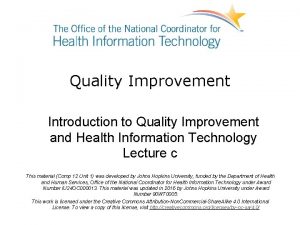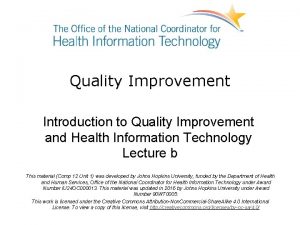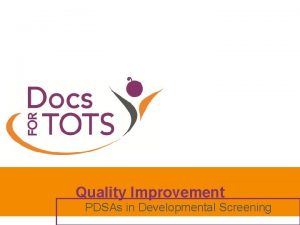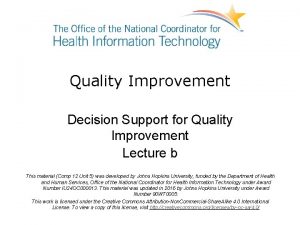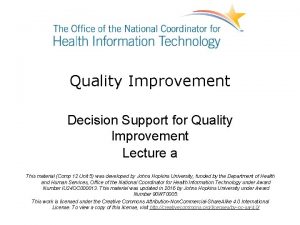Implementing Quality Improvement and P 4 P in














- Slides: 14

Implementing Quality Improvement and P 4 P in Ambulatory Academic Group Practice Neil Goldfarb Associate Dean for Research, JSPH Co-Director, College for Value-based Purchasing of Health Benefits Director of Ambulatory Care Performance Improvement, Jefferson University Physicians Disclosure: No identified conflicts of interest.

Jefferson University Physicians – 500+ physicians – Clinical Care Subcommittee • History • Staffing • Approach to projects – Departmental initiatives – JUP-wide initiatives – Value-based purchasing initiatives

Smoking Cessation Program Department of Otolaryngology • 85% of head & neck cancers are associated with tobacco use and account for 3% of all cancers in the U. S. • In 2006, the Department of Otolaryngology conducted a study of head & neck cancer patients – Baseline finding: 60% documentation of smoking hx – Redesigned charting tool, educated providers – Follow-up finding: 100% documentation

JUP-wide smoking cessation initiative • Charts reviewed • Feedback provided • Education and CME provided – Includes information on billing for counseling • Tools and resources provided • Six-month follow-up charts reviewed

Physician Practice Patient Safety Assessment (PPPSA) • Developed and tested in 2006 by: – Health Research Education Trust (HRET) – Institute for Safe Medication Practices (ISMP) – Medical Group Management Association (MGMA) – National expert panel and advisory committee • Self-assessment tool covers 79 safety-related ambulatory processes and practices • Self-administered by a multidisciplinary team of administrators, physicians, pharmacists, nurses and technicians • Comparative national benchmarks established by MGMA pilot test

Implementation • Fall 2006 – Based on a review of patient safety assessment tools, the PPPSA tool was selected for a pilot implementation throughout JUP • Spring 2007 – Pilot study performed in the Division of Internal Medicine • 2007 -2008: Survey expanded to other JUP practices • January 2009, JUP Management Committee: – Completion of the survey mandated across JUP practices and tied to financial incentive for practice administrators – Selection of one departmental/divisional priority areas for improvement based on baseline measurement – Development and implementation of an action plan – Completion of a timeline for implementation of performance improvement actions and re-measurement

PPPSA Scores for 18 practices Total Percentage Score by Domain

Recommendations Department Level • Identify one safety metric for improvement • Develop and submit action plan for selected safety metric JUP Level • Interdisciplinary patient safety task force • Medication safety educational initiatives • Develop/improve patient education materials, including literacy and language • Develop staff education and competency programs and standards • Examine systems for patient notification of test results • Develop a system for error and near-miss reporting

Physician Quality Reporting Initiative (PQRI) 2010 Measures Applicable to Cardiology • Heart Failure: ACE or ARB for LVSD (5); Beta-blocker for LVSD (8); LVF assessment (198); Patient Education (199); Warfarin for a-fib (200) • CAD: Oral antiplately therapy (6); Beta-blocker therapy for MI (7); symptom and activity assessment (196); LDL Rx therapy (197) • Ischemic Valve Disease: Complete lipid profile (202); LDL control (203); Aspirin therapy (204); BP management (201) • BMI screening and follow-up (128) • Health information technology (124) • Electronic prescribing (pay for performance)

Requirements for Successful PQRI Implementation • Leadership and faculty interest and buy-in • Infrastructure support • Priority within the organization

JUP Approach to PQRI Implementation • Team of administrator and clinical quality nurse meet with practices to provide education on PQRI measures • Selection and specifications of measures • Identification of process changes required for successful PQRI reporting • Development of tools and worksheets • Testing of claims submission using CMS test code • Follow-up with practices • Members of the JUP quality team and JUP administration function as a resource for all practices • Larger PQRI team, consisting of compliance officer, statistician and quality analysts meet to discuss PQRI progress across JUP practices

Barriers and Lessons Learned • Difficult to get buy-in from providers and office staff – Bonus size may be too small – Increased cost of measure submission – Belief that PQRI reporting will not improve patient care • Measures are based on new billing codes and processes • Complexity of measure specifications • Constantly changing measurement set and specifications • Multidisciplinary approach is crucial • Essential to provide ongoing education to practices • Staff must be available to practices as a resource for clarification of measure specifications

Other Initiatives • Support for EMR implementation and achieving “meaningful use” • P 4 P program support: chart reviews, registry development, measurement development, VBP task force

Summary: Challenges from the provider perspective • Need clarity and agreement on measurement parameters (and recognition of issues such as sample size, attribution) • Need frequent, timely feedback • Need recognition of sicker, under-served, nonadherent populations • Need educational tools for providers and patients • Need resources to implement IT and QI • Hospital and physician incentives need to be aligned
 Quality assurance model in nursing
Quality assurance model in nursing Quality improvement vs quality assurance
Quality improvement vs quality assurance Quality improvement vs research
Quality improvement vs research Qsen evidence based practice examples
Qsen evidence based practice examples Quality improvement paradigm
Quality improvement paradigm Continuous quality improvement plan example
Continuous quality improvement plan example Point of care quality improvement
Point of care quality improvement Define continuous quality improvement
Define continuous quality improvement Efmd quality improvement system
Efmd quality improvement system Indiana perinatal quality improvement collaborative
Indiana perinatal quality improvement collaborative Cqi action plan template
Cqi action plan template Tea quality improvement
Tea quality improvement Quality improvement
Quality improvement Sus qi
Sus qi Quality improvement nurse
Quality improvement nurse




